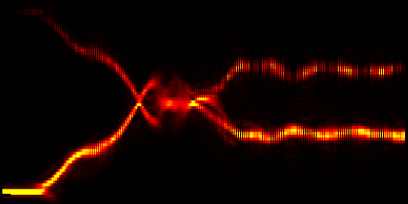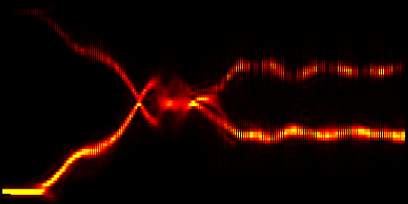On-Demand Spin-Orbit Coupling
Spin-orbit coupling—the interaction of a particle’s motion with its spin—typically arises for electrons orbiting an atom or moving through a crystal lattice. But it can also be “engineered” in cold atomic gases by hitting the atoms with laser beams. Researchers have now shown how this atomic spin-orbit coupling can be tuned in real time by varying the laser properties.
A key driver of the current interest in spin-orbit coupling stems from topological insulators, in which spin-orbit interaction leads to unique properties, such as highly conducting surface states or particle-like states that self-annihilate (so-called “Majorana fermions”). Physicists would like to explore these behaviors by varying key parameters of the coupling, but no spin-orbit control knobs exist in materials. Atomic systems, by contrast, offer more freedom since the coupling is created artificially.
Karina Jiménez-García from the Joint Quantum Institute in Gaithersburg, Maryland, and her colleagues prepared ultracold rubidium atoms in one of two spin states. To induce spin-orbit coupling, the researchers exposed the atoms to a pair of crossed laser beams. The laser frequencies and polarizations are chosen so as to give a momentum kick to the atoms, but the direction of the kick depends on the atoms’ spin. In previous experiments, this atomic spin-orbit coupling has been fixed by the angle by which the lasers cross each other. But Spielman and colleagues showed they could tune the coupling by varying the intensity and phase of the two lasers. They verified this control by measuring the magnitude of the momentum kick with time-of-flight measurements. Being able to tune the spin-orbit coupling should allow scientists to explore the emergence of topological insulators and other so-called topological phases of matter, such as fractional quantum Hall states.
This research is published in Physical Review Letters.
–Michael Schirber





